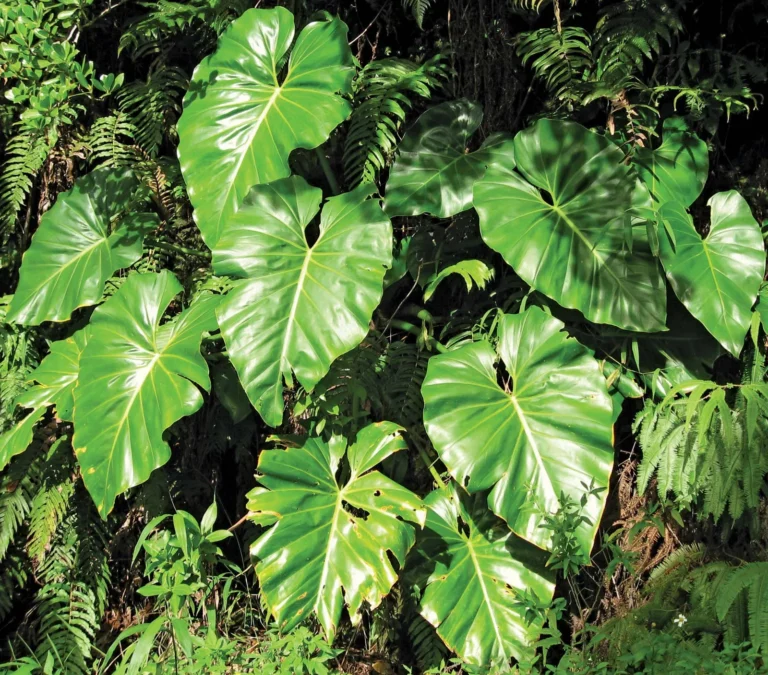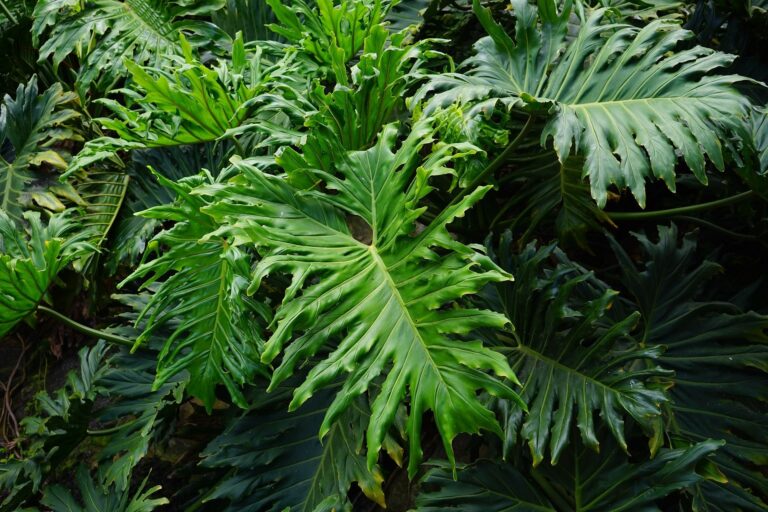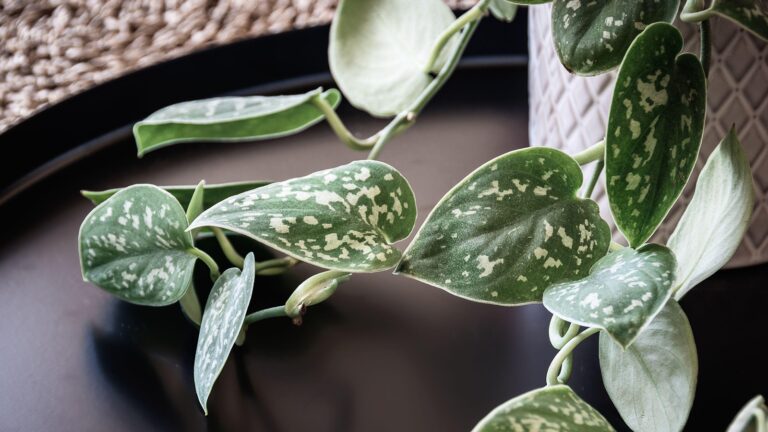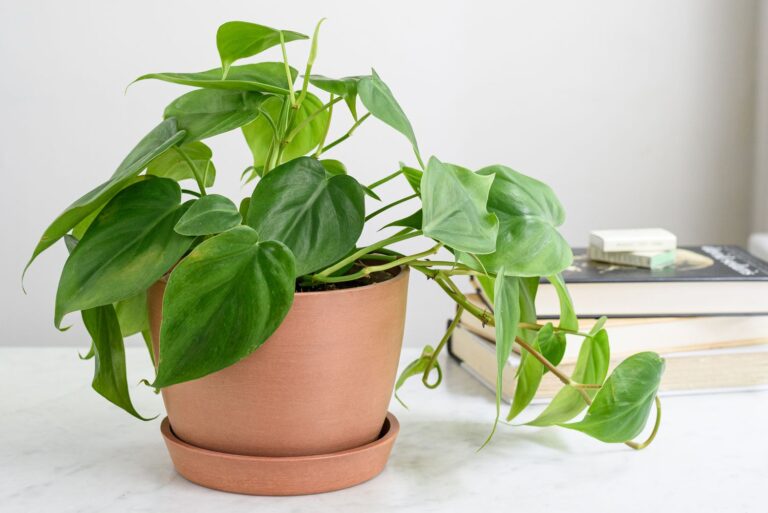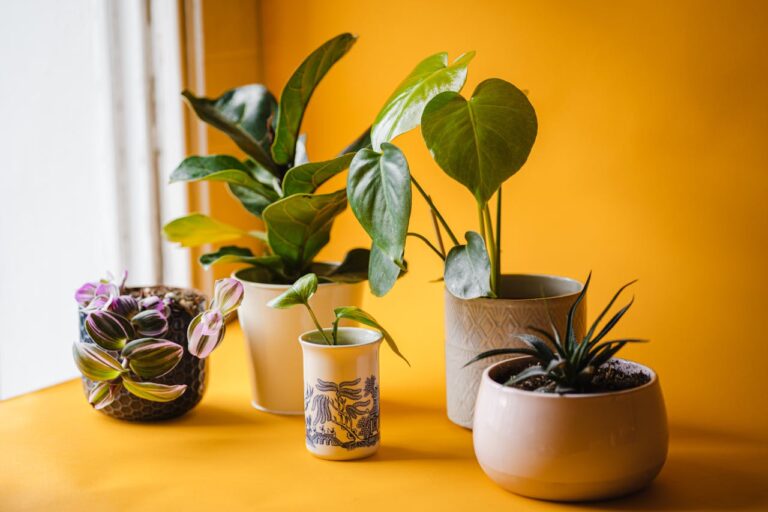Philodendron Conservation: 7 Critical Actions to Save Endangered Species
The world’s philodendron species are currently facing a conservation crisis unlike any in its history. And of the Atlantic Forest endemic tree species, with 82% threatened at the prospect of extinction and record-breaking total losses of tropical forest in 2024 alone reaching 6.7 million hectares, these incredible tropical plants face threats to their extinction. To anyone who wants to save botanical biodiversity, knowledge of the daunting difficulties of wild philodendron becomes inevitable.
Understanding the Silent Crisis of Philodendron Endangerment
Philodendron is one of the broadest genera in the Araceae family of genera; the Neotropical rainforest encompasses over 600 species reported for example of Philodendron trees. Yet this wondrous array hides a frightening new twist: many species are approaching extinction because of rapidly accelerating habitat destruction and illegal collection pressures.
The Atlantic Forest of Brazil, where almost a third of the philodendron species in Brazil live, is a perfect example of this crisis. This biodiversity hotspot used to encompass 1.5 million square kilometers has suffered 97% of forest cover erosion due to urban development and agricultural expansion. Even with the law protecting them the forest continues to lose 18,629 hectares every year, the equivalent of 46,000 football fields vanishing annually.
Recent population assessments show a range of endangered species with alarming low numbers. In Espírito Santo state, the endangered Philodendron spiritus-sancti species lives with fewer than 50 wild individuals collected in patchy ecosystems. Philodendron joepii is also in a much worse situation with botanists recording fewer than 3-4 of their remaining wild specimens.
These species are also not simply botanical curiosities, however. They stand for genetic resources which have been passed down over millions of years and are not replicable.
Myth Busting: CITES Regulations and Philodendron Trade
CITES (Convention on International Trade in Endangered Species) regulations and philodendron species are often misunderstood. While the general consensus is that a lot of philodendrons are being listed under CITES restrictions, current appendices lack listings of any philodendron species. This finding contradicts widely circulated misinformation about trade regulations imposing restrictions on these plants.
The lack of CITES listing does not mean conservation protection. Instead, it reveals the gap between conservation science and policy enactment. International trade for philodendrons is mainly unregulated, however there are some protective measures in Brazil and other range countries.
Brazil has created an endangered species law to label Philodendron spiritus-sancti as “Endangered” nationally and “Critically Endangered” in Espírito Santo state, with domestic limits on collection and trade.
Knowing this regulatory landscape is critical to conservation efforts. Lacking CITES supervision, national governments and national conservation organizations share responsibility for implementing protective measures. There are no international trade restrictions so in addition, conservation success is an absolute function of habitat preservation and sustainable cultivation practices, not regulatory barriers.
The Primary Threat: Habitat Destruction at Unprecedented Scales
Tropical deforestation at an accelerating rate is the great threat to wild philodendron individuals. Worldwide tropical forest loss came to 6.7 million hectares in 2024 (it’s nearly Panama’s size), a tragic marker. This monumental destruction has resulted in the direct destruction of philodendron habitats throughout South and Central America.
Brazil’s Atlantic Forest biome is experiencing particularly acute effects. Studies based on data through October of 2023 show 82% of endemic tree species are endangered and are spread through the forest ecosystem, a fact that led to cascading effects. Philodendron species, most belonging to the microbial niche of trees that are adapted to particular microhabitats in these forests, are unsuitable for the continued systematic habitat fragmentation.
The ecological effects are not limited to single species loss. Philodendrons are key players in forests including hemiepiphytes that form aerial habitats for many species as well as add to the complexity of forest structures. Their morphological profile forms the vertical habitat layers necessary for biodiversity. When these plants vanish, whole ecological communities suffer.
The devastating effects of habitat destruction are exacerbated by climate change. Changed weather patterns, including changes in rainfall patterns and temperature, alter the exact microenvironment the likes of philodendron require. Some species trained for specific elevation ranges or moisture states have a particular risk of exposure to environmental change — with climate changes occurring more rapidly than plants can move or evolve.
Critically Endangered Species: Who Faces Immediate Extinction?
Immediate extinction of a number of philodendron species is concerned and each is associated with specific conservation threats that demands specific intervention approaches. Knowledge about the specific situations of these species allows for better conservation planning.
Philodendron spiritus-sancti: The Atlantic Forest Icon
Philodendron spiritus-sancti is possibly the most threatened philodendron species. Once known from just three fragmented populations in the mountainous Atlantic Forest of Espírito Santo, this species attracted international notice for its dramatically spear-shaped leaves, up to five feet long. New findings of additional populations 128 kilometers from earlier known areas suggest that the species may be more widespread than previously thought, although no more than 100 plants are detected in total wild individuals.
Philodendron joepii: On the Brink of Extinction
Philodendron joepii manages to persist in particularly dangerous conditions, with botanical surveys accounting for fewer than four remaining wild specimens. Known for its deeply lobed leaves and climbing growth, it will be completely extirpated without immediate intervention. At a relatively remote range in the woods, this species is especially susceptible to local habitat destruction actions.
Philodendron edmundoi: Mountain Habitat Specialist
Another Brazilian endemic, Philodendron edmundoi, also faces comparable threats, particularly with Atlantic Forest destruction. This species is recorded at elevations up to 1,400 meters, limiting its range so that its habitat potential and the effects of climate change become even more dire, research suggests. The species’s favoritism towards rocky terrain and forest type constrains adequate habitats as pressures on development grow.
These are just some of the most visible examples of a larger conservation crisis. Few philodendron species have been studied, and few botanical surveys have been performed over many potential ranges of habitats. The actual degree of endangerment is likely to be considerable.
Conservation Success Stories: Reasons for Hope
Though some of these challenges are daunting, recent conservation success stories illustrate how appropriate intervention can stop species extinction and lead to population restoration and recovery. Such examples offer a blueprint for expanding conservation responses to more threatened species.
New Population Discoveries
Research finding previously unknown Philodendron spiritus-sancti populations demonstrates how scientific research reveals new reserves of biodiversity that are hard to find. In 2024 we also mapped a population significantly greater at the scale of Monumento Natural da Serra das Torres, extending the species’ known range by 128 km and identifying at least 50 mature individuals with numerous seedlings recorded. This finding more than doubles that wild population, demonstrating that the species will adapt to changing habitat conditions.
Conservation Breeding Programs
Conservation breeding has been among the most successful approaches for many critically endangered species. Botanical gardens worldwide and located in Brazil have developed living collections of species that retain genetic diversity of the plant but at the same time develop suitable propagation strategies for large cultivation. The programs have some functions, such as conserving the genetics, as well as cultivating for industry production and allowing for material for the upcoming reintroduction efforts.
Citizen Science Contributions
Certainly philodendron conservation and conservation tools, especially citizen science platforms such as iNaturalist, have played a crucial role. Enthusiast observations have brought scientific discoveries, widened known species territories and pinpointed unknown populations. The resulting collaboration of amateur naturalists and professional researchers allows for significantly larger potential for conservation monitoring.
Seed Banking Initiatives
Another hopeful conservation option for seed bank initiatives: seed banking. At present several institutions have started gathering seeds of philodendron seeds under the most controlled environment, and to be kept under regulation which could serve as genetic rescue for some species from extinction. Although there are issues on many tropical seeds, which are stubborn and resistant, with advanced preservation technologies, their long-term storage can be achieved with some stability.
Sustainable Cultivation: Relieving Pressure on Wild Populations
To minimize collection pressures on wild populations, the commercial cultivation of endangered philodendron species is among the most effective approaches undertaken. But effective application needs knowledge on propagation bottleneck or species-specific challenge and finding economically viable means of production.
Tissue Culture Technology
Tissue culture technology has revolutionized rare plant propagation, allowing production on a mass scale with minimal initial input material. This method is especially powerful for species such as Philodendron joepii, which do not manage to maintain any collection pressures. Since then a number of commercial nurseries have successfully implemented tissue culture protocols for critically endangered species thus bringing plants to collectors without affecting wild populations.
Seed Propagation Methods
For many hemiepiphytic philodendrons, seed propagation, although difficult to accomplish, has benefits in terms of keeping genetic diversity. New methods of artificial pollination have produced seeds very effectively for a few species that had previously been hard to propagate. These works step up the advancement towards the creation of sustainable cultivation programs for maintaining genetic diversity.
Certification and Quality Standards
Sustainable cultivation practices must be established so that the commercial viability and the interests of conservation are reconciled. Successful programs must produce plants and keep the genetic integrity, and not hybridize them to the point the species purity is damaged. Different organizations now have certification programs that confirm sustainably-grown plants to give consumers confidence of what is sustainable in purchasing.
Consumer Education
Consumer education is equally essential in creating awareness about environmentally sustainable farming practices. Plenty of plant lovers don’t even know the environmental consequences of wild collection or what some may do to make it so. Consumer messaging on conservation and promoting sustainably propagated plants, as well as awareness and promotional campaigns, also promote responsible purchasing preferences.
How Collectors Can Facilitate Conservation Efforts
Each individual plant collector can exert tremendous influence on philodendron conservation through their purchase behavior, informed purchasing behavior and direct support for conservation efforts. Having an awareness of just what type of specific action they can do that has significant impact helps collectors become a positive force for conservation makes them effective conservation advocates.
Purchase Sustainably Propagated Plants
For collectors, the most immediate conservation action is to buy sustainably propagated plants. Use nursery certification programs to verify plant sources, request propagation documentation from sellers, and ask for vendors’ transparency about their conservation activities. Do not buy wild-collected specimens, especially of known endangered species, at any price, at any time.
Support Conservation Organizations
Support organizations that focus heavily on philodendron conservation projects. Some Brazilian and international organizations specialize in Atlantic Forest preservation, philodendron research, and habitat restoration. These organizations exert huge impacts on conservation through financial contributions, volunteer participation, and education on their roles.
Participate in Citizen Science
Document and share observations on citizen science platforms. Photographing philodendrons in growing (and propagating) processes, recording data, and telling story propagation experience inform conservation work. Such observations contribute to understanding species needs, documenting morphological differences, and tracking success of cultivation.
Engage in Conservation Breeding
Be involved in various conservation breeding programs by keeping an eye on recorded genetic lines, sharing propagation material, and working with scientists researching requirements of particular species. Private collectors often have knowledge and plant material that is crucial to whole conservation efforts if they are to be successful.
Advocate for Habitat Protection
You go to conservation-friendly places to plead for habitat protection subsidies and bring law for land conservation to their feet so that other countries also help protect the species’ habitat too. Making them use the political system can increase buy-in for conservation funding over time.
Emerging Technologies and Future Conservation Strategies
It appears that philodendron saving will ultimately be about combining conventional with new technologies and managing resources, at least to some extent, as the evolutionarily adapted society has evolved. Adaptation to climate change, habitat loss and changing threats requires novel responses that balance the need for conservation of existing species with changing external environments.
Genetic Analysis Technologies
Genetic analysis technologies provide unprecedented opportunities for philodendron diversity, thus informing conservation priorities. The use of DNA barcoding allows for rapid detection of species, detects illegal trade in endangered species, and clarifies taxonomic relationships between under-studied species. Such tools are especially useful for determining conservation priorities among the existing undescribed or poorly documented philodendron species.
Habitat Restoration Innovations
The technologies of habitat restoration are advancing and new methodologies for restoration activities are in use, with authors coming up with strategies for restoring appropriate habitat for hemiepiphytic species in restored forests. More effective planning to manage the plant community and coexistence in philodendron rehabilitation can be done with the knowledge of microhabitat specificities, host tree preferences and ecologic community contacts, so in effect, we aim for a more optimized restoration strategies.
Climate Change Adaptation
Strategies to avoid the impacts of climate change are becoming more and more significant. Conservation should take such measures as assisted migration, genetic rescue through a controlled hybridization, and selection for climate-adapted traits. These methods remain controversial but may serve as necessary for preserving species in extreme climate scenarios.
International Cooperation
International cooperation mechanisms bolster the effectiveness of conservation by means of harmonised joint research efforts, shared genetic resources, and joint funding to priority research tasks. Networking between botanical institutions, conservation organizations and research facilities promotes effective use of resources and knowledge transfer.
Take Action Now: Your Role in Philodendron Conservation
The plight of the species of philodendrons is a crisis and will require everyone who cares about biodiversity to address it now instead of years to come. Although hard to predict, each individual action by humans can add tremendous conservation benefits when applied in a coordinated, ongoing manner.
Educate Yourself
Start by learning about individual areas of species conservation and habitat. Knowing where species are most threatened with extinction is essential in managing focused conservation efforts to inform their support for prevention work. Conservation research and policy developments must also be regularly refreshed and adapted using new approaches.
Audit Your Collection
Assess, honestly, your own plant collection and purchasing practices. If you can, swap any specimens which have been sourced from wild, shoot these out with sustainable replicas and pledge to buy from reputable sustainable places next time this happens. Write down your collection’s genetic roots and share successes with other collectors and conservation organizations.
Support Conservation Work
Support (financing, volunteering, advocating) conservation organizations. Participation from you amplifies these organizations’ abilities for an impactful conservation job while also representing public support in their ongoing funding and policy push.
Spread Awareness
Create information about conservation to plant lovers communities, their social network and local garden clubs. There continue to not be a significant amount of awareness of what happens once wild collections are depleted or about alternatives, which means that education and outreach form the basis of the foundation for a much larger audience behind the preservation of conservation.
Philodendron conservation will not be a fate for the future unless there are immediate actions coupled with the long term commitment of both. Individual species such as Philodendron spiritus-sancti and Philodendron joepii are facing a very high risk of extinction, however effective conservation efforts help to avoid their extinction and, consequently, the loss of the biodiversity that this extraordinary plant represents. Your contribution to these movements in turn allows one to save flora and fauna for our children and the next generation without loss of wild philodendron.
Key Sources:
Evolution of Philodendron (Araceae) species in Neotropical biomes
iNaturalist record of the threatened aroid Philodendron spiritus-sancti
CITES Appendices I, II and III valid from 21.05.2023
Fires Drove Record-breaking Tropical Forest Loss in 2024
Thousands of tree species at risk of extinction in Atlantic Forest: study
Philodendron Spiritus-Sancti: A Complete Guide
A Triumph with a Triumphans – Exotica Esoterica
Philodendron joepii, Philodendron pedatum, Philodendron ‘Glad Hands’


